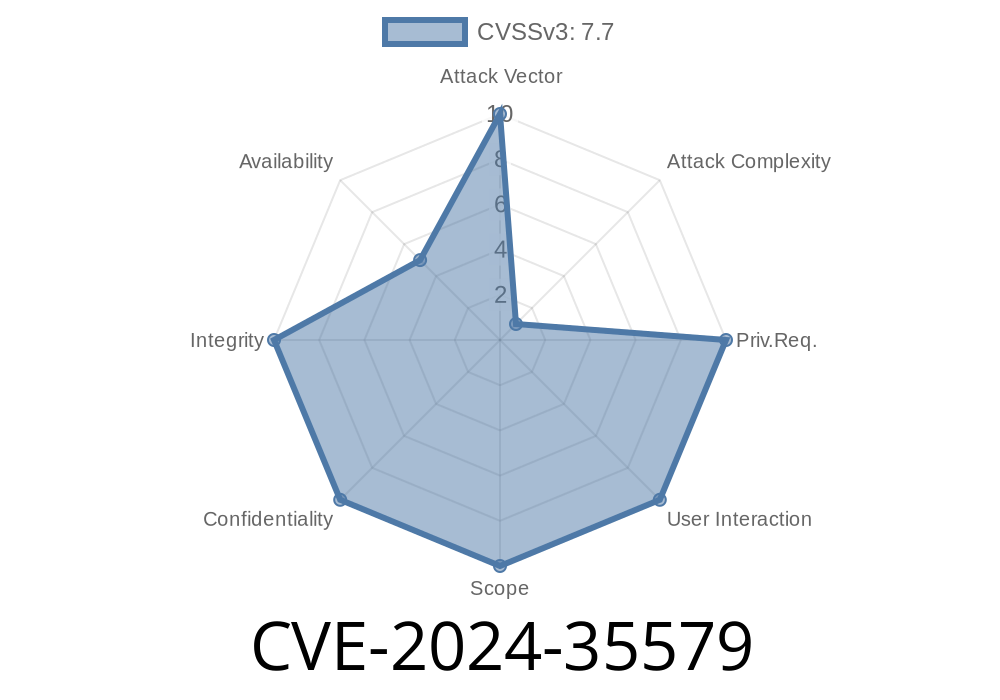In June 2024, a serious vulnerability known as CVE-2024-35579 was discovered in the Tenda AX1806 router, version 1...1. This model is popular for its affordability in home and small office networks. The flaw is related to the way the router processes a parameter named iptv.city.vlan in the formSetIptv function, allowing remote attackers to execute a stack buffer overflow—which can lead to unauthorized code execution.
This post breaks down the vulnerability in clear terms, provides a code snippet illustrating the problem, shares reference links, and discusses exploit scenarios. It’s crafted exclusively to help you understand the attack vectors and defensive steps for CVE-2024-35579.
Why Does This Happen?
The root cause is insufficient bounds checking on the user-supplied iptv.city.vlan parameter. Think of it this way: The router expects a small chunk of input, but if you send a giant “string,” it overflows the memory buffer, which can overwrite crucial data—including return pointers or security controls.
Where is the Code Vulnerable?
Disassembled or decompiled snippets from the Tenda AX1806 firmware show a dangerous use of the C function strcpy (or similar) without proper length checking.
Here’s a simplified example (for illustration only)
int formSetIptv(request *req)
{
char vlan_buffer[64]; // Fixed-size buffer, too small for unchecked input
// User-controlled input copied straight into buffer
strcpy(vlan_buffer, req->params["iptv.city.vlan"]); // NO bounds checking!
// ... (processing happens here)
return ;
}
If an attacker submits a very long iptv.city.vlan value (over 64 bytes), it overflows vlan_buffer, corrupting critical stack data.
A proof-of-concept using simple HTTP POST (with exaggerated input)
curl -X POST "http://<ROUTER_IP>/goform/formSetIptv"; \
-d "iptv.city.vlan=AAAAAAAAA...<much more A's>...AAAAAAAAA"
If the attacker crafts their input carefully (for example, mixing in shellcode or a jump address), they could end up running code of their choice on the router.
References
1. CVE Report: CVE-2024-35579
2. Original Disclosure on GitHub
How Bad Is It?
If your router’s web admin interface is exposed to the internet, any attacker can potentially exploit this bug and take control. Even local users (inside your Wi-Fi) can attack exposed routers. An attacker could:
Restrict WAN access: Block external (internet) access to your router’s web admin.
- Update Firmware: Check Tenda’s support site for firmware updates regularly.
- Network Segmentation: Place untrusted devices on a different subnet from your router’s admin interface.
Exclusive Insights & Recommendations
- The vulnerable function formSetIptv processes not only iptv.city.vlan, but possibly other parameters unsafely. Explore other input points for similar risks.
- Since stack overflows often lead to reliable code execution on embedded devices, this flaw is critical for both home and business users.
- If you can, SEGREGATE your router management from your main network (use a dedicated admin VLAN or port).
- Push Tenda support channels for patched firmware—large vendors sometimes respond faster to user pressure.
Conclusion
CVE-2024-35579 is a critical security bug in the Tenda AX1806 router that allows remote attackers to gain control via a simple overflow in the IPTV settings. Until an official fix is released, keep your admin interface private, stay vigilant for abnormal router behavior, and keep your firmware up to date.
Have more questions or need technical help? Contact me or join network security forums for more guidance.
If you own a Tenda AX1806, act now—don’t leave your network open to takeover through CVE-2024-35579!
Timeline
Published on: 05/20/2024 18:15:10 UTC
Last modified on: 08/08/2024 15:35:12 UTC
